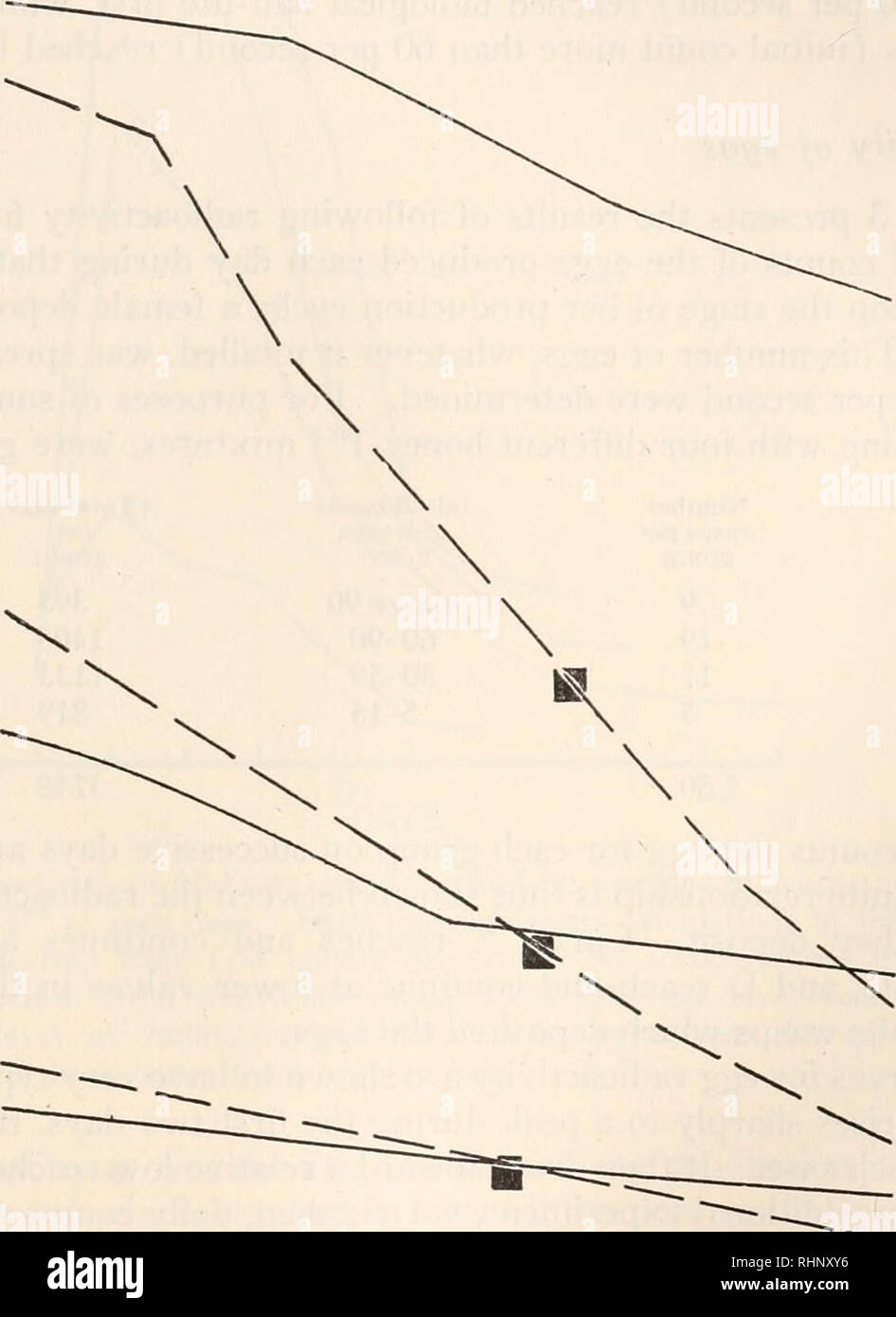. The Biological bulletin. Biology; Zoology; Biology; Marine Biology. FATE OF INGESTED P-32 299 eggs per animal by the sixth day, those of line B had deposited only 61.6 eggs per animal. Line C which runs almost parallel to B represents females of quite similar egg productivity (59.9 eggs, cumulative total per animal). The implica- tion of course is that the more eggs an animal lays per unit time, the more rapid may be its loss of radioactivity. The difference in slope between non-laying and laying live wasps points to the egg as a highly significant channel of P32 loss. Direct evidence of egg

Image details
Contributor:
Library Book Collection / Alamy Stock PhotoImage ID:
RHNXY6File size:
7.2 MB (140.6 KB Compressed download)Releases:
Model - no | Property - noDo I need a release?Dimensions:
1349 x 1853 px | 22.8 x 31.4 cm | 9 x 12.4 inches | 150dpiMore information:
This image is a public domain image, which means either that copyright has expired in the image or the copyright holder has waived their copyright. Alamy charges you a fee for access to the high resolution copy of the image.
This image could have imperfections as it’s either historical or reportage.
. The Biological bulletin. Biology; Zoology; Biology; Marine Biology. FATE OF INGESTED P-32 299 eggs per animal by the sixth day, those of line B had deposited only 61.6 eggs per animal. Line C which runs almost parallel to B represents females of quite similar egg productivity (59.9 eggs, cumulative total per animal). The implica- tion of course is that the more eggs an animal lays per unit time, the more rapid may be its loss of radioactivity. The difference in slope between non-laying and laying live wasps points to the egg as a highly significant channel of P32 loss. Direct evidence of egg radioactivity is treated in the following section. Figure 2 presents results based on larger numbers of animals in verification of the biological half-life. Thirty live ovipositing animals were followed for seven days. These animals comprised three groups which reflect the feeding of three 90 r 70 o o UJ CO 50 K Ul Q. §30 o 10. I 234567 DAYS FIGURE 2. Verification of the results of Figure 1 using larger samples of wasps at three levels of radioactivity. The solid lines are for wasps killed immediately after feeding. They demonstrate measurable decay of P32 with a half-life extrapolating to between 14 and 15 days. The broken lines refer to egg-laying wasps with squares drawn to mark biological half life reached between four and five days.. Please note that these images are extracted from scanned page images that may have been digitally enhanced for readability - coloration and appearance of these illustrations may not perfectly resemble the original work.. Marine Biological Laboratory (Woods Hole, Mass. ); Marine Biological Laboratory (Woods Hole, Mass. ). Annual report 1907/08-1952; Lillie, Frank Rattray, 1870-1947; Moore, Carl Richard, 1892-; Redfield, Alfred Clarence, 1890-1983. Woods Hole, Mass. : Marine Biological Laboratory